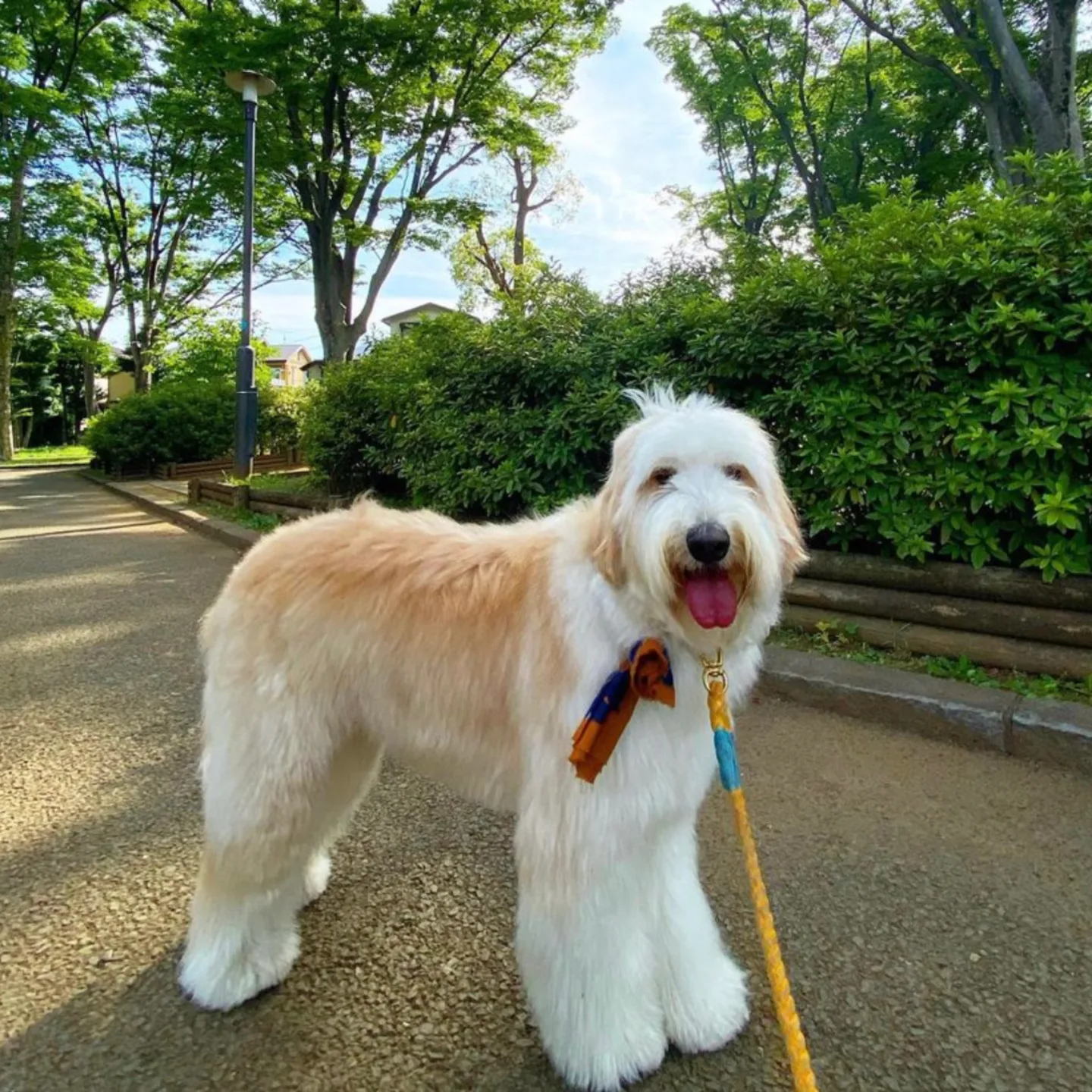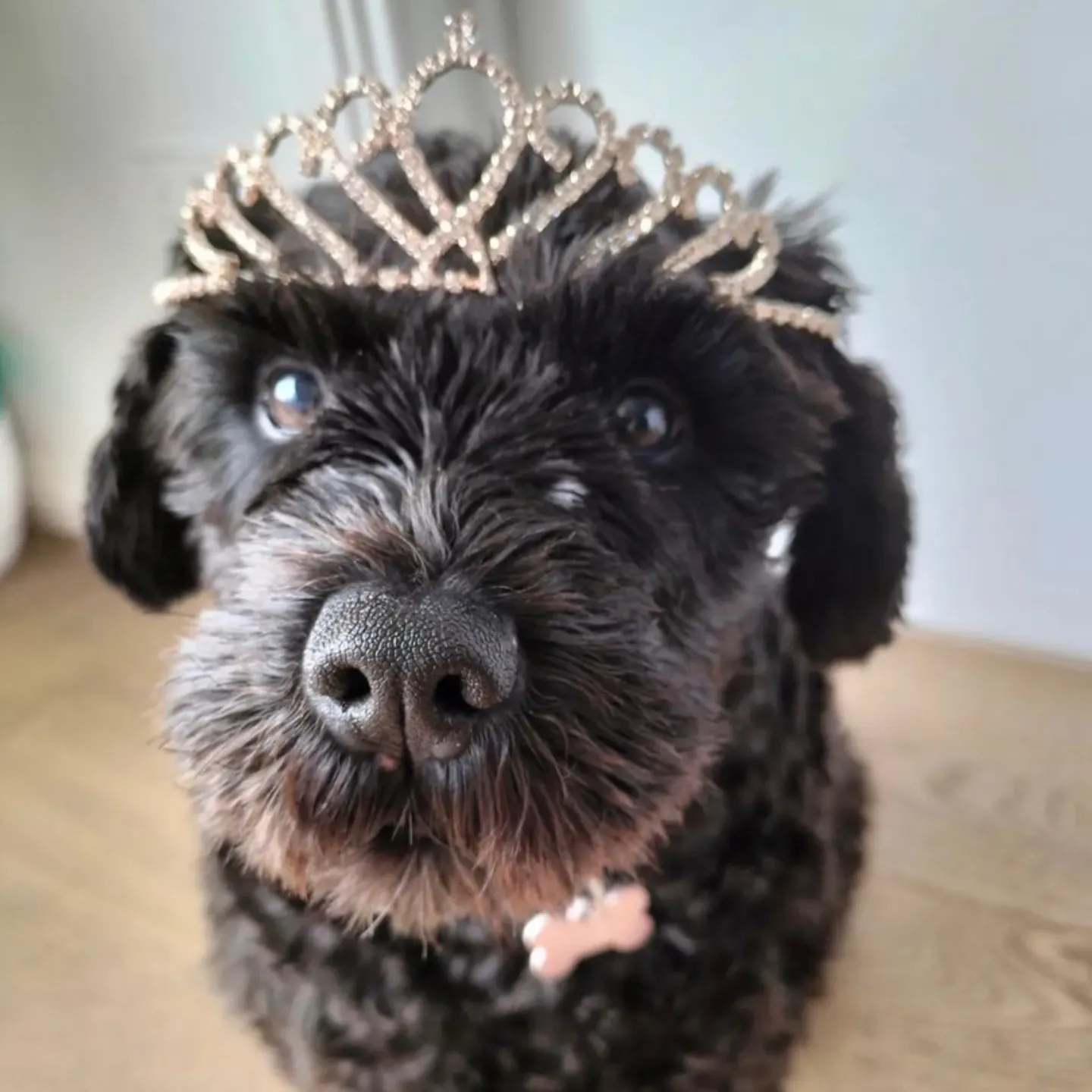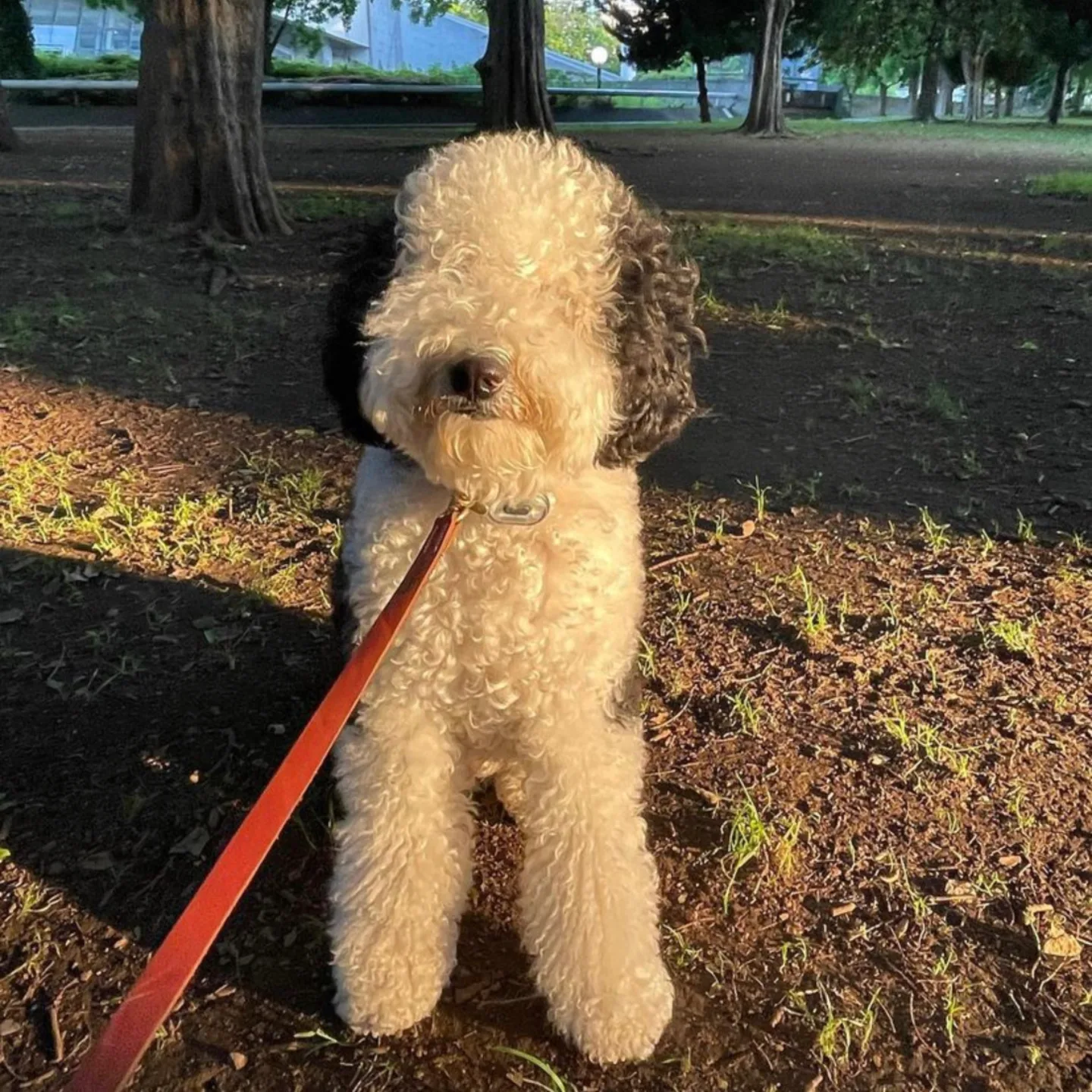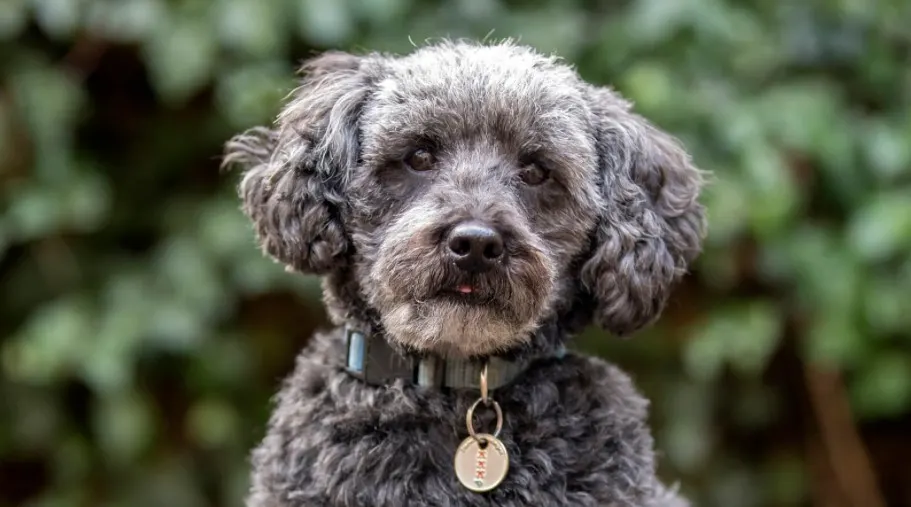But, what else is it that makes the Schnoodle such an interesting designer dog? How is their personality, are they high maintenance, and most importantly how are they health-wise? We´ll also answer the question of how big do Schnoodles get as well as talk about their health conditions.
In today’s article, we’re going to answer all of these questions and show you why Schnoodle puppies are a designer breed worth having!
Read some of our other articles:
Schnoodle puppies – The Teddy bear dog
We have already said that this is a combination of a Schnauzer and Poodle. Both of its parent breeds are great dogs with high intelligence, so Schnoodle puppies should be the same, right?
Well, that´s what we will explore in this article! But, we need to tell you right away. Because this is a mixed breed, we won´t be able to tell you exactly what this breed will be like or look like.
With mixed breeds, it´s always a bit difficult to predict what they will be like and even look like. There are many different types of mixed-breed dogs. They can be any size, weight, or color. It’s hard to predict how a mixed-breed puppy will look when it grows up. Puppies even from purebred breeds don’t look much like the adult dogs they will become.
It’s almost impossible to do this with mixed-breed puppies, though. Some traits can be ruled out if we know the parents’ breeds. For example, if two small purebreds are crossed, their offspring will be on the smaller size too. The same applies to personality. We can´t know which traits the puppies will inherit from which parent breed.
That´s why we need to look at both parent breeds separately. That way we can get a better picture of all the possible traits the puppies can inherit. In short, because this is a mixed breed, there is less consistency among the dogs and their appearance.
The appearance of the Schnoodle
The Schnoodle is sometimes also called a Teddy bear dog, because of its uncanny resemblance to a Teddy bear! We have already said that they come in a nomenclature of sizes depending on the Poodle parent´s size. So, there are three different sizes of the Schnoodle: Toy Schnoodles, Miniature Schnoodles, and Standard Schnoodles.
Because this is a mixed breed there are no set sizes for how big your Schnoodle will become, but, a general rule is:
- Toy Schnoodles are small dogs and range from 10 to 12 inches in height and weigh 6 to 10 pounds.
- Miniature Schnoodles range from 12 to 15 inches in height and weigh 13 to 20 pounds.
- Standard Schnoodles range from 15 to 26 inches in height and weigh 20 to 75 pounds. This size of Schnoodle is also called Large Schnoodle.
If a Schnoodle takes on more traits from their Poodle or their Schnauzer parent, they will look a little different. Because of that, Schnoodles have a long coat (or let´s say it´s on the longer side), but some Schnoodles will have a wiry coat like their Schnauzer parent, while others will have a curly coat like their Poodle parent.
Schnoodles can have brown or hazel eyes and black or brown noses, but not both. Generally speaking, they can have a coat that is black, white, brown, gray, or sable.
The great thing about Schnoodles is that they carry fewer allergens in their coat. Because these dogs are part Poodle, they also inherited that hypoallergenic coat of the Poodle. Which makes them great for people allergic to dog hair.
Hypoallergenic dogs
While we´re talking about the hypoallergenic traits of the Schnoodle coats, let´s explain in more detail what hypoallergenic even is. You need to make sure that you know that no dog breed is completely hypoallergenic or free of allergies. Instead, the term hypoallergenic is used to describe breeds that are less likely to make people have an allergic reaction.
It’s a common misconception that allergies are caused by a dog’s fur or hair itself. But, allergies are actually caused by the dander that’s found on a dog’s skin or coat.
So, if dander is the cause of dog hair allergies, then we can conclude that the following types of dogs cause no issues to humans:
Dogs that don’t shed — Those dogs have a non-shedding coat that produces less dander.
Canines that don’t have hair — With these dogs, it´s less likely that dander clings to them.
Dogs that have short, single-layered coats — Without an undercoat to shed, there is dander coming off the dog and sticking around in your home.

Source: Instagram (@luke_thedog_tokyo)
Appearance of the Schnauzer
Schnauzers, in general, are some of the most well-known breeds on the planet. Miniature schnauzers don’t disappoint when it comes to their body shape and wire-haired coat.
There are also three sizes of the Schnauzer:
- Miniature Schnauzer
- Giant Schnauzer
- Standard Schnauzer
Their heads and snouts are square while their ears are often cropped to make them stand up straight But this is a controversial topic, while many people claim that cropping hard is good for a dogs health, according to the American Veterinary Medical Association, cropping a dog’s ears is mostly done for looks and has no proven health benefits.
Because miniature schnauzers have wiry hair that grows quickly, their coats will naturally become shaggy. The standard cut for schnauzers is to keep the fur short on their bodies and heads, but longer on their feet, belly, and snouts. Solid black, salt and pepper, black and silver, and solid white are some of the colors. Solid white is not allowed by the American Kennel Club.
Appearance of the Poodle
Poodles come in three different sizes: toy, miniature, and standard. These aren’t different breeds of dogs. They’re just different sizes of the same dog. In height, the Toy Poodle can be up to 10 inches tall. It weighs between six and nine pounds. The Miniature Poodle is 11 to 15 inches tall and weighs 15 to 17 pounds, and it is a small dog breed. Lastly, we have the Standard Poodle which is above 15 inches tall. Males weigh 45 to 70 pounds, and females weigh 45 to 60 pounds.
The Poodle is a well-built dog with a square and well-proportioned body. Because they look so elegant, they are great for just being a fashion dog. Their eyes are oval-shaped and come in a dark color. Their nose is always dark, too. They often fold their ears close to their head.
As an allergy-friendly dog breed, the Poodle has a single layer coat that is dense and naturally curly. They come in a variety of colors, such as brown, white, gray, and silver.
This type of dog is a lot of work, and they need to be groomed often. Bathe and groom them once or twice a week, or as needed. Use only dog shampoo and conditioner to make their fur soft, silky, and smell good. Doing this as soon as they are old enough will make them feel more at ease with the process and make it easier for you to groom and bathe your dog.
Keep an eye out for sores or rashes while you’re grooming them. You can look for signs of infection on the skin and in the nose, mouth, and eyes. You can also look at the feet. The eyes of the Poodle have to be clear, and shouldn´t be read or have any discharge. At least once or twice each week, check your dog’s ear for redness or a bad smell. If you see these signs, your dog has an ear infection. In order to keep dogs from getting an ear infection, make sure that their ears are clean.
Personality of Schnoodle Puppies
The Schnoodle is a dog to wish for! They are very cheerful, intelligent, and loyal. In fact, they are such bundles of joy that they’re described as the “forever happy” designer dog!
There’s nothing they would rather do than play with their family, cuddle and just spend time with their favorite people! This breed was simply bred to be a companion dog.
The Schnoodle got the best characteristics of both its parents. They are loyal like the Schnauzer (nothing like Schnauzer love) and fun-loving like the Poodle.
This mix is protective and makes a good watchdog just like the Schnauzer. And, like the Poodle, they are smart and affectionate. The Schnoodle is a very loyal, affectionate, and loving dog
You should know one thing though, it can happen that the Schnoodle will love one family member more than the others.
However, we still need to remind you that these are all general characteristics of Schnoodle puppies. Because this is a breed you simply can’t know how they will be personality-wise. You can’t predict that. It’s possible that your Schnoodle will be more like one or the other parent.

Source: Instagram (@mini.misaki)
Common health issues – Hybrid vigor
When talking about Schnoodle puppies we have to mention their health too. Because this is a mixed breed, a hybrid between two purebred breeds, hybrid vigor is worth mentioning.
According to the hypothesis of hybrid vigor, dogs of mixed ancestry will be healthier than purebred dogs. So, mixed breeds won´t have the health issues their parent breeds have.
Interesting fact: genetic markers can be used to determine how much of which breed is in your designer dog!
And in certain situations, this may be accurate, since inbreeding among purebreds has rendered some breeds susceptible to a variety of hereditary health issues. Mixed-breed dogs are often less likely to develop some genetic problems because their parents originate from a more diversified genetic pool, making it less probable that harmful recessive genes would present in both parents. Large dogs, such as German Shepherd Dogs, are prone to hip dysplasia.
Mating a German Shepherd carrier of the defective gene with a dog from a breed that isn’t known to have hereditary hip issues lessens the chances of having kids with the condition. Breeding the Shepherd with another Shepherd whose ancestors do not have the genetic issue, on the other hand, produces the same outcome.
No health guarantee
You should know that hybrid vigor is not assured in a mixed-breed dog. For example, when a German Shepherd with hip dysplasia is bred with a Golden Retriever with hip dysplasia, the mixed breed pups will have hip dysplasia, hybrid vigor or not.
Because most genetic problems are widespread in many different breeds, it is difficult to ensure that mating any two dogs will not result in defects unless you know the health history of those two dogs’ ancestors and/or have had genetic testing performed on the dogs. As a result, the most frequent genetic disorders in the mixed breed population are almost as common as they are in the purebred population.
Some purebred dog breeds have issues due to the breed’s excessive physical characteristics. The French Bulldog, for example, has such tiny hips and a huge head that artificial insemination and Caesarean section are often necessary to create pups.
Crossing such a dog with another breed will most certainly result in dogs without these reproductive issues, but most experts on dog populations oppose procreation among crossbreeds and mixed breeds since there are currently so many purebreds and mixed breeds available for adoption.
There is no guarantee that any dog will have no genetic disorders since not all harmful genes are recessive. Of course, purebred and mixed-breed dogs are also vulnerable to nongenetic diseases such as rabies, distemper, injuries, and parasite infestation.
This is why it’s super important to buy from a reliable breeder, someone who will show you health clearances for both parents of the puppy, and not puppy mills or an irresponsible breeder.
Other health issues
Now, let’s take a look at all of the possible health problems Schnoodles or Schnoodle puppies might face in their lifetime and the general health of their parent breeds. Overall, Schnoodles are happy and healthy dogs, but they still might experience different health issues in their life. Just like any other hybrid or purebred breed, there are certain health issues you should be aware of and know the symptoms too.
Hip dysplasia, elbow dysplasia, hypothyroidism, and von Willebrand’s disease are only some of the health issues that are common among dogs, including Schnoodles.
Besides these, your Schnoodle might experience the following health problems:
- Progressive Retinal Atrophy
- Cataracts Legg-Calve-Perthes Disease
- Patellar Luxation
- Epilepsy (seizure disorder)
- Diabetes mellitus
- Addison’s Disease
- Gastric Torsion
To keep your dog healthy and happy you need to pay a lot of attention to the food you´re feeding them. Try to get high-quality food that is high in protein, as protein is important for all dogs no matter their breed. Now, also keep in mind that dietary needs change as your dog gets older. Your Schnoodle puppy won´t have the same dietary needs as an adult Schnoodle dog.

Source: Instagram (@mynamesunday)
Exercise and care
Even though Schnoodle puppies and adult Schnoodle dogs are small, they still need a lot of exercises, between 30 and 60 minutes a day to be precise. This designer breed has a very high energy level and it´s a playful dog! They love a long walk now and then, hikes and they make great jogging companions! So if you’re someone who loves the outdoors then the Schnoodle is just right for you!
Understanding how active these dogs are we’ll tell you that Schnoodles are known for excelling in performance dog sports like dog agility.
One tip we can give you is to have a lot of variety when exercising your Schnoodle puppies, the same activities can get a bit boring over time. And by doing this you´re making sure your dog won´t have any behavioral problems.
Another good reason to bring in a lot of variety into exercise sessions is that you´re exercising your dog´s mind as well. And as we all know mental stimulation is very important as well.
One of many great characteristics of Schnoodles is that they shed minimally and their coat is very soft and quite wavy. When it comes to the color of their coat, it can be black, gray, silver, brown, white, apricot, sable, black and white, black and tan, and even parti-color.
You will have to brush them once or twice a week, and bathing should only be done when necessary, but not more often than once a month.
Besides their coat, you’ll need to take care of their ears too! Once a week check your Schnoodle’s ears for dirt, redness, or a bad odor. All of this can indicate an infection. Don’t forget to clean your dog’s ears weekly with a cotton ball dampened with a gentle cleanser. This will prevent any problems.
Conclusion
Schnoodles make really good pets, and if you want to bring this dog home, you definitely won’t regret it. They are active and loyal dogs that will bring much joy to your house. It won’t take a lot of time until the Schnoodle becomes the main attraction of the whole family.
These dogs are great for families because they love to play with kids and be the center of attention. Dogs from both parent breeds are good with children and will probably become best friends with all kids. But also know that all puppies need to get used to kids to be comfortable with them, too. It’s not the same when you introduce a five-year-old dog to your child as it is when you introduce a puppy. But when kids are exposed to Schnoodles early, they get along great.
In the same way, you should teach kids how to touch and approach dogs, you should also supervise any interactions between dogs and young kids to make sure there isn’t any biting or ear or tail pulling on either side. You should teach your child not to touch a dog while he’s having a meal or sleeping, or try to take the dog’s food. No dog, no matter how friendly, should be left alone with a child. So make small sure children are never alone with the Schnoodle, especially if you have a large Schnoodle.
The good news is that socialization from puppyhood makes a big difference in how a dog thinks about other dogs and cats, and generally animals.
Popular names for Schnoodle puppies
If you already bought or adopted a Schnoodle dog, you might need some help in finding the right name for your pooch. Look for a name that suits your dog’s personality and something simple enough for them to remember.
To help you out a bit we put together a list of 20 popular names for Schnoodle puppies that might inspire you. Of course, this list can only serve as an inspiration:
- Princess
- Lily
- Tiny
- Max
- Pepper
- Zeus
- Munchkin
- Pixie
- Foxy
- Charlie
- Jinx
- Toby
- Flora
- Coco
- Heidi
- Cutie
- Roxy
- Baby
- Gus
- Jett

